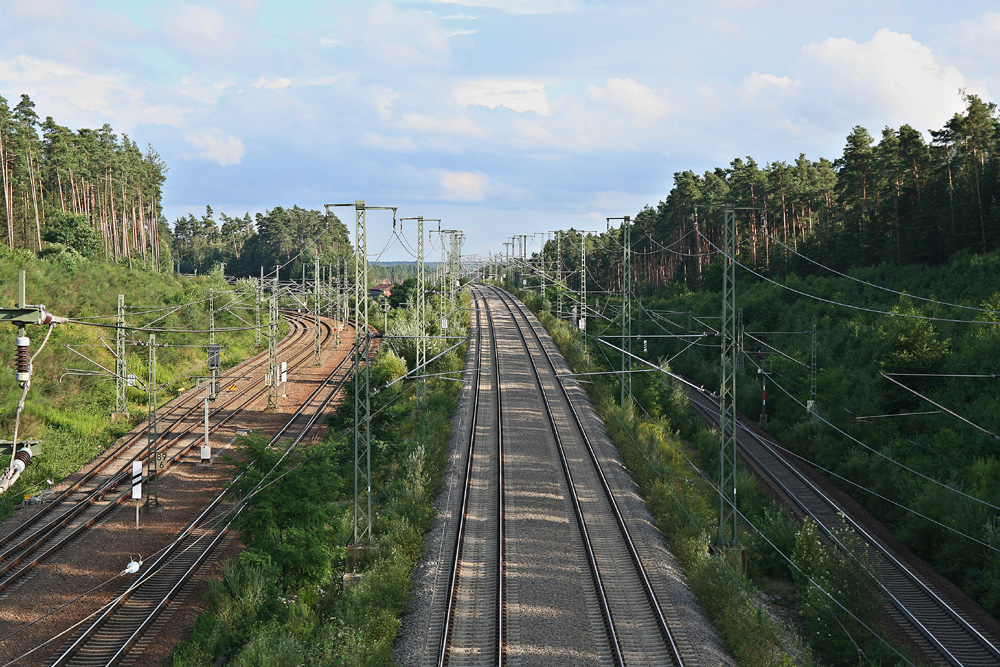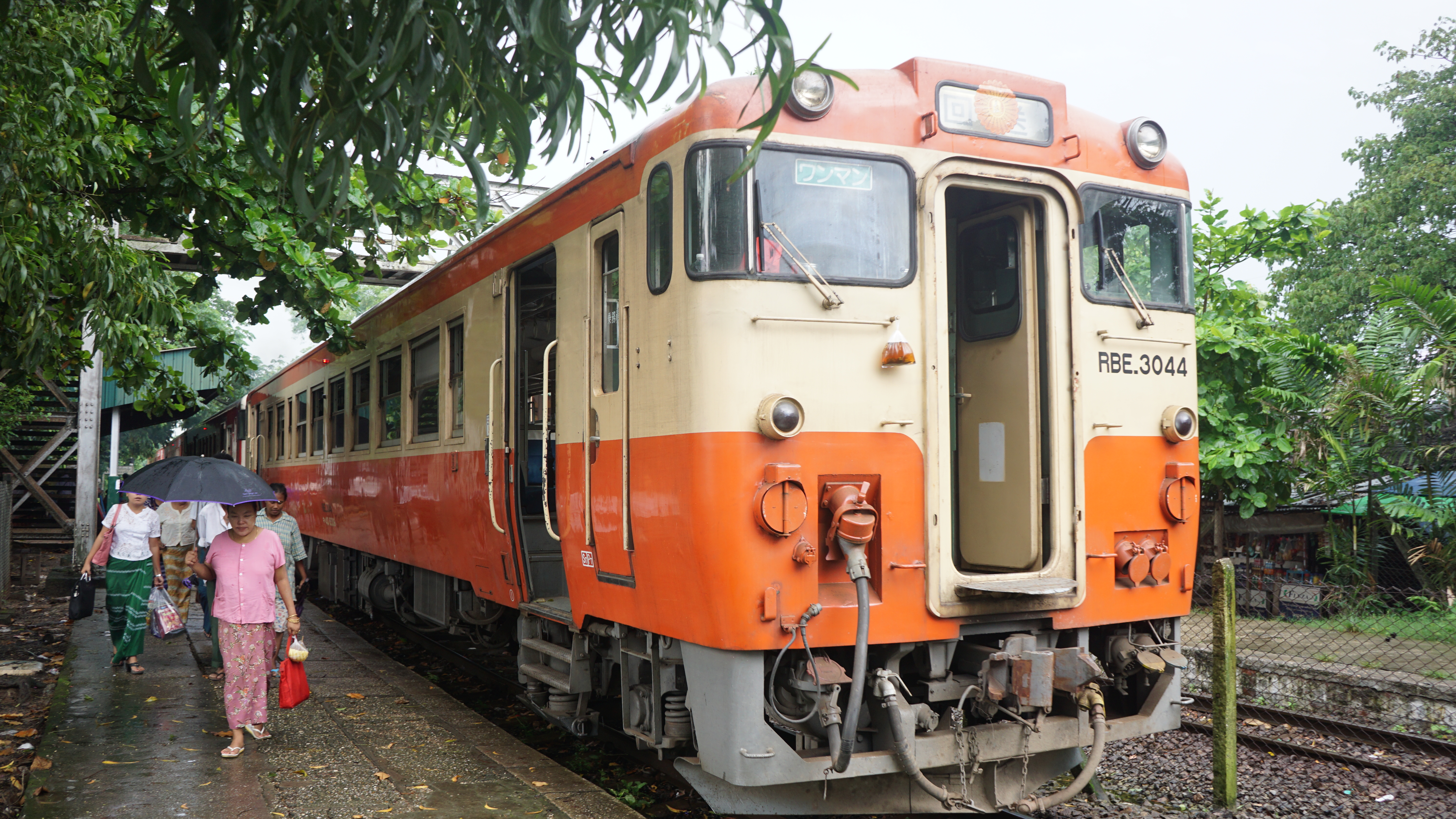|
Hachinohe Line
The is a railway line in the Tohoku Region of Japan, operated by East Japan Railway Company (JR East). It links Hachinohe Station in Hachinohe, Aomori with Kuji Station (Iwate), Kuji Station in Kuji, Iwate. The line stretches 64.9 km along the Pacific Ocean coast with a total of 25 stations. The section between Hachinohe and Same stations is also known as the . Stations ;Legend :◇, ∨, ∧ - Trains can pass each other at this station :| - Trains cannot pass Rolling stock New KiHa E130 series, KiHa E130-500 series diesel multiple unit trains were introduced on the Hachinohe Line from 2 December 2017, displacing the ageing KiHa 40 series DMUs. All services on the line will be operated by KiHa E130-500 series DMUs from the start of the revised timetable on 17 March 2018. The fleet consists of six two-car units and six single-car units. History In 1894, a spur line connecting Shiriuchi (now ) on the Tohoku Main Line with Hachinohe (now was completed. This line was so ... [...More Info...] [...Related Items...] OR: [Wikipedia] [Google] [Baidu] |
KiHa E130
The is a class of diesel multiple unit (DMU) trains operated since January 2007 by the East Japan Railway Company (JR East) in Japan. Variants * KiHa E130-0 series: Single-car and two-car units used on the Suigun Line since January 2007 * KiHa E130-100 series: Single-car units used on the Kururi Line since 1 December 2012 * KiHa E130-500 series: Single-car and two-car units used on the Hachinohe Line since December 2017 KiHa E130-0 series The Suigun Line KiHa E130-0 series fleet, based at Suigun Depot (Hitachi Daigo), consists of 39 cars formed as 13 single-car KiHa E130 units and 13 two-car (KiHa E131 + KiHa E132) sets. These trains are operated on services between and . They entered service from January 2007, totally replacing the KiHa 110 series DMUs previously used on this line by September of the same year. The first KiHa E130 single-car units were delivered from Niigata Transys in December 2006, with 12 cars delivered by the end of January 2007. KiHa E130-13 was deliv ... [...More Info...] [...Related Items...] OR: [Wikipedia] [Google] [Baidu] |
Hachinohe Station
is a railway station operated by the East Japan Railway Company (JR East) in Hachinohe, Aomori, Japan. Lines Hachinohe Station is served by the high-speed Tōhoku Shinkansen line between and , and forms the starting point of the Hachinohe Line to . Local services are operated by the third sector Aoimori Railway on the section of the former JR Tōhoku Main Line between and . It is one of six principal stations served by the Aoimori Railway Line and is the easternmost high-speed Shinkansen railway station in Japan. Station layout Hachinohe is an elevated station with one side platform and two island platforms serving five tracks for regular services, and two island platforms serving four tracks for Tōhoku Shinkansen services. The station has a ''Midori no Madoguchi'' staffed ticket office. Platforms History The station began operation as on the Nippon Railway on September 1, 1891. Initially, the construction of a railroad close to the coast was opposed by the Imp ... [...More Info...] [...Related Items...] OR: [Wikipedia] [Google] [Baidu] |
Spur Line
A branch line is a secondary railway line which branches off a more important through route, usually a main line. A very short branch line may be called a spur line. Branch lines may serve one or more industries, or a city or town not located on a main line. Branch lines may also connect two or more main lines. Industrial spur An industrial spur is a type of secondary track used by railroads to allow customers at a location to load and unload railcars without interfering with other railroad operations. Industrial spurs can vary greatly in length and railcar capacity depending on the requirements of the customer the spur is serving. In heavily industrialized areas, it is not uncommon for one industrial spur to have multiple sidings to several different customers. Typically, spurs are serviced by local trains responsible for collecting small numbers of railcars and delivering them to a larger yard, where these railcars are sorted and dispatched in larger trains with other ... [...More Info...] [...Related Items...] OR: [Wikipedia] [Google] [Baidu] |
KiHa 40 Series
The is a diesel multiple unit (DMU) train type introduced by Japanese National Railways (JNR) in 1977 and operated by all Japan Railways Group companies on suburban and rural services in Japan. Since 2017, the train type has seen use by other private railway companies in Japan who have purchased withdrawn units from JR Group companies. Additionally, it has also seen use in overseas operations in Myanmar since 2011 and is also scheduled to be used in Thailand. Overview The KiHa 40 series diesel multiple unit was introduced in 1977 by JNR to replace ageing KiHa 10 series DMUs on suburban and rural services nationwide. A total of 888 vehicles were built between 1977 and 1982, broadly divided into three main types: KiHa 40, KiHa 47, and KiHa 48. These were subdivided as shown below, with further variants and modifications made later in their lives by the various JR Group companies. "Cold" regions refers to the Tohoku and Chubu regions. JR Hokkaido Following the privatization ... [...More Info...] [...Related Items...] OR: [Wikipedia] [Google] [Baidu] |
JRE Kiha48 JoyfulTrain-UMINEKO
JRE can mean *Java Runtime Environment *''The Joe Rogan Experience'' *JR East, see East Japan Railway Company The is a major passenger railway company in Japan and the largest of the seven Japan Railways Group companies. The company name is officially abbreviated as JR-EAST or JR East in English, and as in Japanese. The company's headquarters are in ... * Jeunes Restaurateurs d’Europe {{disambig ... [...More Info...] [...Related Items...] OR: [Wikipedia] [Google] [Baidu] |
Rias Line
The is a railway company in Iwate Prefecture in northern Japan. The company and its lines are also known as . The company was founded in 1981, as the first " third-sector" (half public, half private) railway line in the country, excluding special cases such as freight railways in seaports. Its lines are former Japanese National Railways (JNR) lines, that were going to be closed. Santetsu acquired these lines in 1984. The company also operates a travel agency and other businesses. Lines * Rias Line ( リアス線) (163.0 km, - ) Rias Line Station list History Kita-Rias Line The Japanese National Railways (JNR) opened the Miyako to Taro section in 1972 and the Kuji to Fudai section in 1975. It constructed the Taro to Fudai section, and transferred the entire line to Sanriku on the day it opened in 1984. The line features 42 tunnels, including the Masaki (6,532 m) and Omoto (5,174 m) tunnels, both opened in 1984. Minami-Rias Line JNR opened the Sakari to Ryori sectio ... [...More Info...] [...Related Items...] OR: [Wikipedia] [Google] [Baidu] |
Kunohe District, Iwate
* List of Provinces of Japan > Tōsandō > Rikuchū Province > Kunohe District * Japan > Tōhoku region > Iwate Prefecture > Kunohe District is a rural district located in Iwate Prefecture, Japan. As of June 1, 2019, the district has an estimated population of 33,315 with a density of 43.6 per km2 and an area of 763.56 km2. The entire city of Kuji, and most of the town of Kuzumaki were formerly part of Kunohe District. Towns and villages The district has two towns and two villages: * Hirono * Karumai * Kunohe *Noda History The ancient county of in Mutsu Province was divided into the counties of Ninohe, Sannohe, Kunohe and Kita in 1634. Under the Tokugawa shogunate, Kunohe county consisted of 47 villages under the control of Hachinohe Domain, 10 villages under the control of Morioka Domain and one village under joint control. Following the Meiji restoration The , referred to at the time as the , and also known as the Meiji Renovation, Revolution, Regeneration, R ... [...More Info...] [...Related Items...] OR: [Wikipedia] [Google] [Baidu] |
Hirono, Iwate
270px, seacoast at Hirono is a town located in Iwate Prefecture, Japan. , the town had an estimated population of 14,906 in 6790 households, and a population density of 49 persons per km² in 6,858 households. The total area of the town is . Geography Hirono is located in far northeastern Iwate Prefecture, bordered by Aomori Prefecture to the north and the Pacific Ocean to the east. Neighboring municipalities Aomori Prefecture * Hashikami Iwate Prefecture * Karumai * Kuji Climate Hirono has a humid oceanic climate (Köppen climate classification ''Cfa'') characterized by mild summers and cold winters. The average annual temperature in Hirono is 9.5 °C. The average annual rainfall is 1168 mm with September as the wettest month and February as the driest month. The temperatures are highest on average in August, at around 22.3 °C, and lowest in January, at around -2.1 °C. Demographics Per Japanese census data, the population of Hirono has declined over t ... [...More Info...] [...Related Items...] OR: [Wikipedia] [Google] [Baidu] |
Sannohe District, Aomori
* List of Provinces of Japan > Tōsandō > Mutsu Province > Sannohe District * Japan > Tōhoku region > Aomori Prefecture > Sannohe District is a Districts of Japan, district located in Aomori Prefecture, Japan. It occupies the southeast corner of the prefecture, bordering Iwate Prefecture. As of June 1, 2019, the district has an estimated population of 63,205 and a population density, density of 65.2 persons per km2. The total area was 969.34 km2. Politics In terms of national politics, the district is represented in the Diet of Japan's House of Representatives of Japan, House of Representatives as a part of the Aomori 2nd district. Towns and villages The district consists of five towns and one village. The city of Hachinohe, Aomori, Hachinohe was formerly part of the district. * Gonohe, Aomori, Gonohe * Hashikami, Aomori, Hashikami * Nanbu, Aomori, Nanbu * Sannohe, Aomori, Sannohe * Shingō, Aomori, Shingō * Takko, Aomori, Takko History During the Edo period, ... [...More Info...] [...Related Items...] OR: [Wikipedia] [Google] [Baidu] |
Hashikami, Aomori
is a town located in Aomori Prefecture, Japan. , the town had an estimated population of 13,012 in 6,039 households, and a population density of 140 persons per km2 The total area of the town is . Geography Hashikami occupies the far southeast corner of Aomori Prefecture, facing the Pacific Ocean. The coastline is rugged and highly indented, forming numerous small bays. Inland, the land is hilly, rising to the west to a height of at the highest point. A portion of the coastal areas of the town were within the borders of the Tanesashi Kaigan Hashikamidake Prefectural Natural Park, which was incorporated into the Sanriku Fukkō National Park in 2013. Neighbouring municipalities Aomori Prefecture *Hachinohe * Hirono Iwate Prefecture * Karumai Climate The town has a cold maritime climate characterized by cool, short summers and long, cold winters with heavy snowfall (Köppen climate classification ''Cfa''). The average annual temperature in Hashikami is 9.5 °C. The avera ... [...More Info...] [...Related Items...] OR: [Wikipedia] [Google] [Baidu] |
Pacific Ocean
The Pacific Ocean is the largest and deepest of Earth's five Borders of the oceans, oceanic divisions. It extends from the Arctic Ocean in the north to the Southern Ocean, or, depending on the definition, to Antarctica in the south, and is bounded by the continents of Asia and Australia in the west and the Americas in the east. At in area (as defined with a southern Antarctic border), the Pacific Ocean is the largest division of the World Ocean and the hydrosphere and covers approximately 46% of Earth's water surface and about 32% of the planet's total surface area, larger than its entire land area ().Pacific Ocean . ''Encyclopædia Britannica, Britannica Concise.'' 2008: Encyclopædia Britannica, Inc. The centers of both the Land and water hemispheres, water hemisphere and the Western Hemisphere, as well as the Pole of inaccessi ... [...More Info...] [...Related Items...] OR: [Wikipedia] [Google] [Baidu] |



